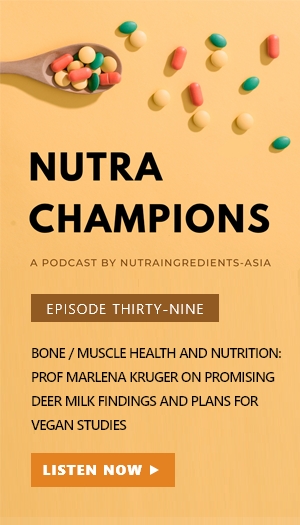Lower salt and oil in modified Sichuan diet can lower blood pressure in hypertensive adults – RCT

Researchers in China conducted a randomised controlled feeding trial to observe the impact of the CHH diet-SC on hypertensive adults. They found that the CHH diet-SC has beneficial effects on BP.
“The hypotensive effects of CHH diet-SC may be partially attributed to its inclusion of less edible salt and oil compared with that of the control diet. On the one hand, by using low-sodium salt, limiting sodium-laden condiments, and improving cooking methods, the CHH diet-SC reduced sodium to 2.47 g. Strong evidence has documented that reducing sodium intake can decrease BP,” wrote the researchers in Asia Pacific Journal of Clinical Nutrition.
Sichuan cuisine is characterised by high salt and oil content, which are risk factors for hypertension. The prevalence of hypertension in Chinese adults has increased steadily in the past three decades, with Sichuan having a much lower rate of control of the disease compared to the rest of the country.
With Sichuan cuisine being a popular diet among the Chinese, and with growing evidence showing that dietary modification is effective in reducing BP, the researchers saw it necessary to provide effective dietary strategies that fit into traditional Chinese diet culture for hypertension management.
As the existing diets for managing hypertension were designed for European and American populations, it may be difficult for Chinese to adhere to them due to the differences in taste preference. The researchers thus wanted to test the effectiveness of implementing the CHH diet-SC on hypertensive adults.
The CHH diet-SC was based on the traditional Sichuan cuisine and retained the original flavour. There was also a large reduction in oil and salt content and increased inclusion of whole grains, fruits, seafood, low-fat dairy, soybean, and nuts.
The study
The four-week study was a multicentre (Beijing, Shanghai, Chengdu, and Guangzhou) randomised controlled feeding trial among Chinese adults between March 2019 and January 2021. The researchers conducted a secondary analysis of the trial using data from the Sichuan Chengdu centre in Southwest China.
Fifty-three people aged 25 to 75 years with a mean systolic blood pressure (SBP) between 130 and 159 mmHg were enrolled for the study.
Participants had to consume a typical local diet for one week prior to the study. During this run-in period, researchers adjusted the diet energy intake to a suitable level required for each subject to maintain a stable body weight.
The energy intake level was maintained throughout the study to avoid significant body weight changes. At the end of the run-in period, information on demography, lifestyle and health behaviours, medical history, and current medication were collected.
Participants were then randomly categorised into two groups: the CHH diet-SC or the control group (the typical local diet). This was a single-blind trial in which subjects were masked to the diet assignment.
Similar ingredients were used for the same meal in both groups and eating places were different between groups to ensure the successful implementation of single blinding. BP was measured and assessed by researchers who were blinded to the group assignment.
For four weeks, both groups had to consume at least 18 assigned meals per week.
All diets were prepared and provided to participants throughout the study. The lunch and dinner meals were centralised suppled in the community and breakfast was taken back by the subjects the day before and consumed the next morning.
Researchers and nutritionists developed the recipes. The recipe of CHH diet-SC was carefully designed and modified based on traditional Sichuan cuisine to retain the original flavour and taste and improve the compliance of participants.
For the CHH diet-SC, the targeted macronutrient distributions were 55-60% from carbohydrates, 17-19% from protein, and 25-27% from fat. Dietary sodium intake was restricted to about 2000 mg/d, and dietary potassium, calcium, magnesium, and fibre increased to 3700 mg/d, 1200 mg/d, 500 mg/d, and 30 g/d, respectively. To achieve the targeted nutrient goal, food groups including whole grains, vegetables, fruit, low-fat dairy, lean meat, seafood, soybean, and nuts were emphasised in the CHH diet-SC. In addition, low-sodium salt and vegetable oil were used for cooking in the CHH diet-SC.
The control group consumed the typical local diet with targeted macronutrient distributions of 50-55% carbohydrate, 32-34% fats, and 10-12% protein. The sodium content of the control diet was estimated to be 4700 mg/d and slightly lower than the mean intake level of Sichuan residents. The control diet provided potassium, calcium, magnesium, and fibre at levels close to those of the average Sichuan diet.
At the end of the trial, the following measurements were taken: Changes in SBP, diastolic blood pressure (DBP), mean arterial pressure (MAP), and the rate of BP control.
Apart from analysing participants’ urine samples, the researchers also observed the participants’ opinions about the trial meals, which were collected via a questionnaire.
Sichuan diet with lower salt and oil beneficial for hypertension
Overall, the CHH diet-SC group consumed significantly more protein, carbohydrate, polyunsaturated fatty acids (PUFAs), cholesterol, and dietary fibre but less saturated fatty acids (SFAs) and monounsaturated fatty acids (MUFAs).
The CHH diet-SC group consumed less sodium but more potassium, calcium, magnesium, phosphorus, zinc, selenium, and antioxidative vitamins, including vitamin A, vitamin E, vitamin C, and folate.
For the CHH diet-SC group, the consumption of whole grains, fruits, poultry, seafood, eggs, low-fat dairy, soybean, and nuts was significantly increased but red meat, cooking oil, and salt were decreased compared with the control. No significant difference was found in vegetable consumption between the two groups.
Consistent with dietary sodium intake changes, the estimated 24-hour urinary sodium decreased substantially compared to the start of the trial, but there was no significant change in the control group.
Both groups also indicated that they accepted and enjoyed the trial diet.
“The results showed that CHH diet-SC can lower SBP, DBP and MAP by 10.1/4.01/6.02 mmHg respectively, more than the control group. We also found that the reduction in SBP started within one week and continuously improved for the next three weeks. Furthermore, the rate of BP control was significantly increased after the four-week CHH diet-SC intervention. The significant decrease in BP reported in our study was consistent with several RCTs that examined the effect of diet patterns on BP,” said the researchers.
A recent meta-analysis of 133 RCTs found that each reduction of 2.30 g sodium decreased SBP and DBP by 7.70/3.00 mm Hg in hypertensive individuals. Thus, the low-sodium characteristics of the CHH diet-SC could explain a large part of the BP reduction in our study. On the other hand, the high content of edible oil is a distinctive feature of traditional Sichuan cuisine that may influence BP.
“In conclusion, the present study showed that the CHH diet-SC, which contained reduced cooking salt, oil, and red meat, adequate whole grains, vegetables, and fruits, moderate seafood, low-fat dairy, soybean, and nuts, can reduce BP and increase the rate of BP control among hypertensive adults, suggesting the beneficial effect of CHH diet-SC on BP. More efforts are needed to further promote the adoption of the CHH diet-SC in larger populations,” said the researchers.
Source: Asia Pacific Journal of Clinical Nutrition
DOI: https://doi.org/10.6133/apjcn.202403_33(1).0002
“Effects of the Chinese heart-healthy diet (Sichuan cuisine) on lowering blood pressure in adults with hypertension: a randomized controlled feeding trial”
Authors: Hong Chen, Danping Su et al.
Active Lifestyle Nutrition will be a major topic at Growth Asia Summit 2024 – join us in Singapore to learn about market opportunities and glean insights from major industry experts. Find out more here.













